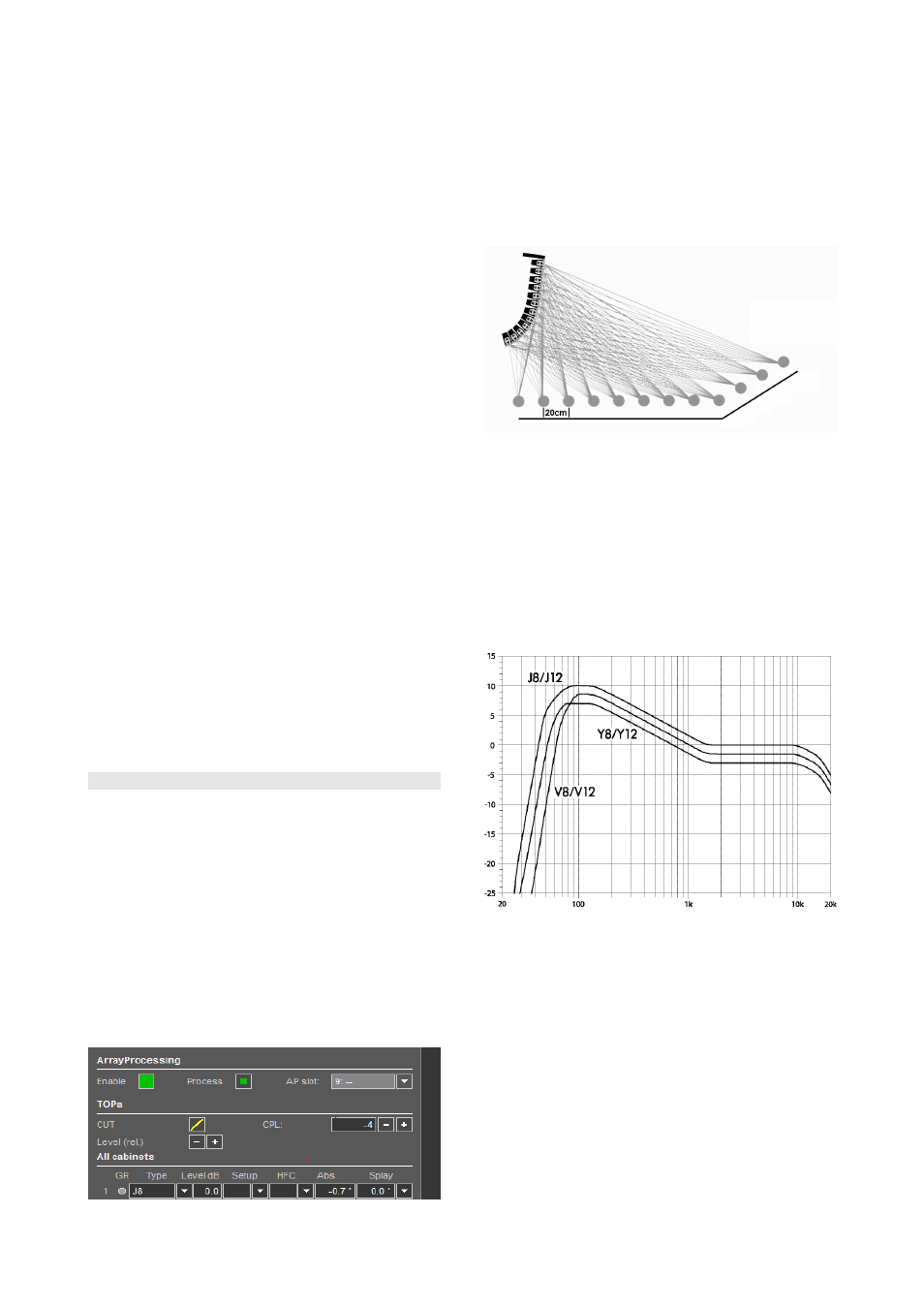2 how does it work – d&b TI 385 d&b Line array design User Manual
Page 49

ArrayProcessing can eliminate these issues by providing a
consistent frequency response throughout all listening
positions. The resulting effect is that what you hear at FoH is
what you will hear everywhere else. The mix is valid for
everyone.
Compensating air absorption effects
ArrayProcessing includes air absorption effects in its
calculations and provides a precise and seamless
correction for all relevant cabinets. This not only provides
a more consistent sound balance over distance, in many
applications where the system has sufficient headroom, its
throw can be extended and the need for delay systems is
greatly reduced.
Flexibility
The level distribution in the audience area can be modified
and tailored to reduce the level towards the front of the
audience area and modify the level drop over distance
over the audience area. Different ArrayProcessing settings
for the array can be compared at a mouse click.
Intelligibility
In many applications, achieving a more accurate directivity
control causes less stimulus to the reverberant field and
leads to improved intelligibility.
Health & safety
Using ArrayProcessing, the level increase towards the front
of the venue can be adjusted. Reducing it may help
avoiding harmful sound pressure at the front while keeping
the desired level for the rest of the audience.
11.2 How does it work?
With the introduction of ArrayProcessing, for speaker
simulation a completely new unified, more accurate and
adaptive speaker model was developed and implemented.
This speaker model provides exactly the necessary degree
of detail for the type, size and the frequency range of each
source – the highest resolution to provide a precise
description of the behavior of a line array's sharp HF
dispersion, a medium resolution to cover the dispersion
characteristics of point sources and directional subwoofers
or a rather coarse resolution for omnidirectional
subwoofers.
The ArrayProcessing algorithm also considers and corrects
diffraction effects produced by neighboring cabinets.
Target points are distributed along the listening area profile
with a 20 cm spacing (along the intersection of the array
profile with all matching listening planes). When
ArrayProcessing is enabled, it first calculates the
contribution of each individual source to each listening
position using a high spectral resolution of 24 frequencies
per octave, making a total of 240 individual frequencies
per target point over the entire ten octave audio band.
The resulting data are stored in a matrix and serve as a
basis for all further calculations.
The ArrayProcessing optimization routine will then create a
unified/standardized frequency response at all these points.
This target frequency response is exactly the reference
response that is initially defined when tuning and voicing
the controller setups for the d&b line arrays in conventional
(unprocessed) setups. This response is identical for all
systems above approximately 140 Hz, below that
frequency each system has its own individual LF extension,
depending on the specific cabinet design.
Target frequency responses for J-, V- and Y-Series TOPs
Please note that the response created by the
ArrayProcessing algorithm is independent of array length,
curvature and system type. Any ArrayProcessing line array
design will provide the same sonic characteristics. Any
combination using multiple columns of ArrayProcessing line
arrays (rear fills, outfills, delays, etc.) does not require
individual tuning and maintains this uniform sonic footprint.
Any further adjustment to the system response, either by
using the CPL (Coupling) function or by applying master
equalization is then carried out identically on the entire
system for all listening areas.
TI 385 (6.0 EN) d&b Line array design, ArrayCalc V8.x
Page 49 of 54
